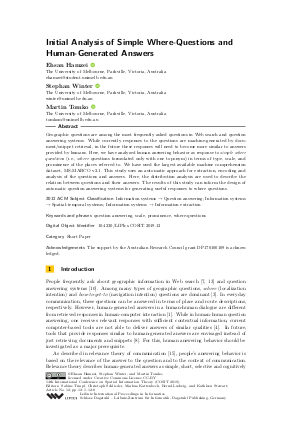LIPIcs.COSIT.2019.12.pdf
- Filesize: 429 kB
- 8 pages

 Creative Commons Attribution 3.0 Unported license
Creative Commons Attribution 3.0 Unported license










Feedback for Dagstuhl Publishing